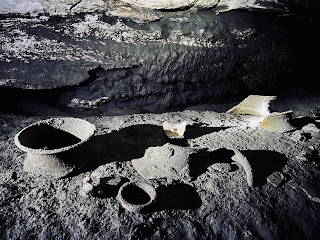Once again we begin another immersion program with the same awe and enthusiasm as always! This time, during our orientation, we had the opportunity to visit many incredible places around the Yucatan peninsula and are so grateful for the hospitality, generosity, joy, and delicious food that we received f from all the families that we encountered on our trip.
Walking through these beautiful places, we saw beautiful sunrises and sunsets from the shores of a lake, and a full moon that illuminated the night while our friend Don Polo told us stories of his life and the ejido, the communal system of land stewardship, of his community in Quintana Roo. We walked on wooded pathways to listen to and observe native birds of the jungle-like forest.
Our journey was also full of history. We were able to visit different archeological sites and in them, we climbed up the Mayan pyramids to observe the diversity of arquitectonic styles, saw ornate masks and stuccoed doorways that give a clear indication of the splendor that these buildings once represented. On the paths around the ruins, we were accompanied by wild turkeys, howler monkeys and curious spider monkeys.
Once again we returned to the surface to visit the cemetery of a community with the unique and peculiar tradition of preserving the bones of their loved ones who have passed on. We ended our journey around the peninsula when the host families welcomed us to the community that our students will form a part of for the first portion of their stay here in Yucatan.

















